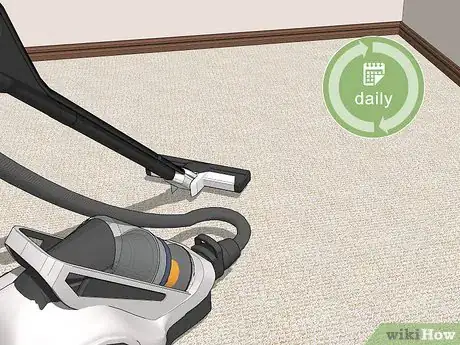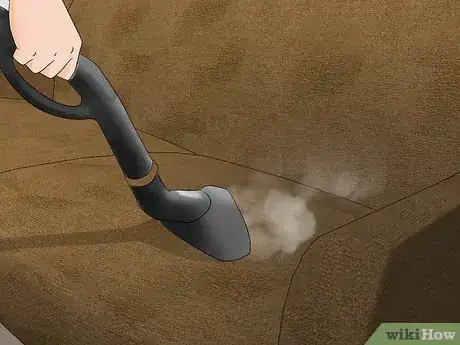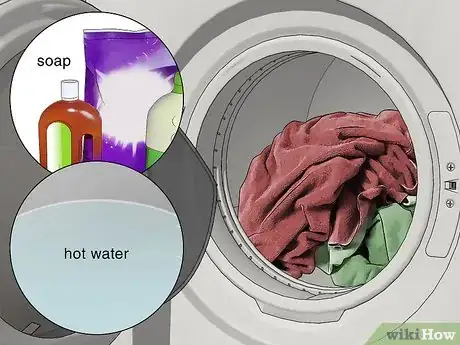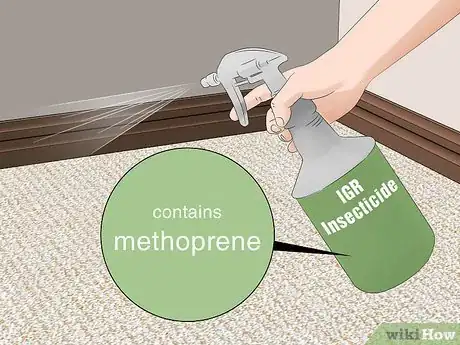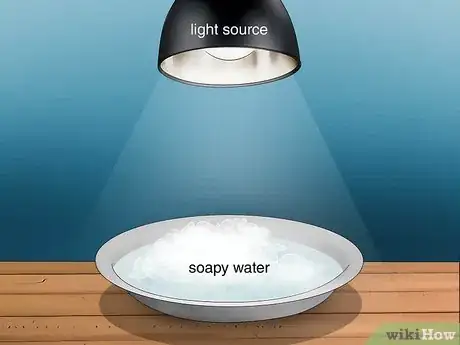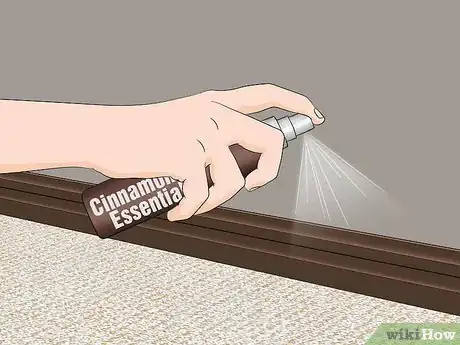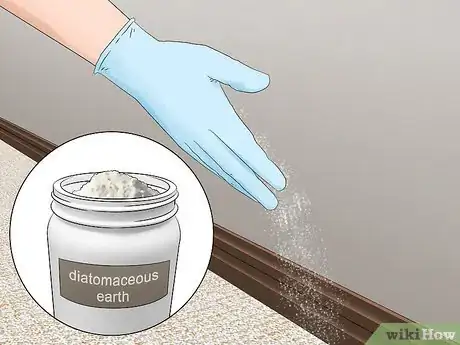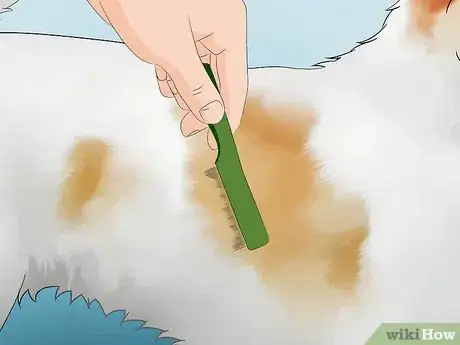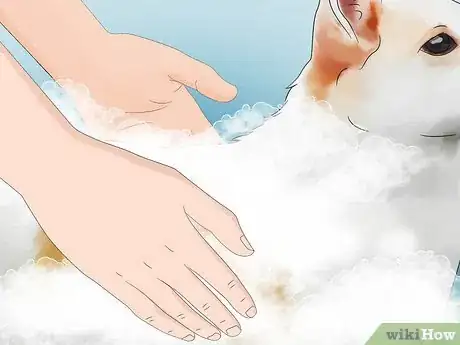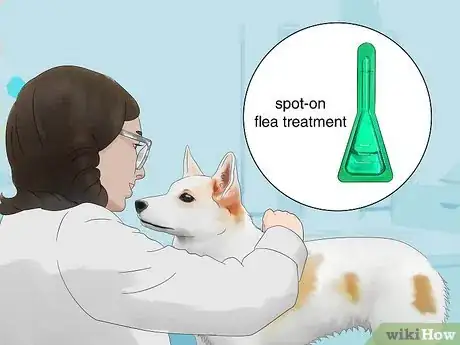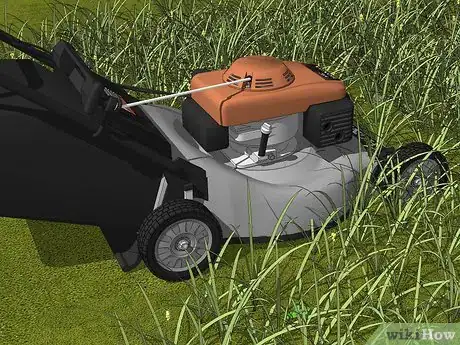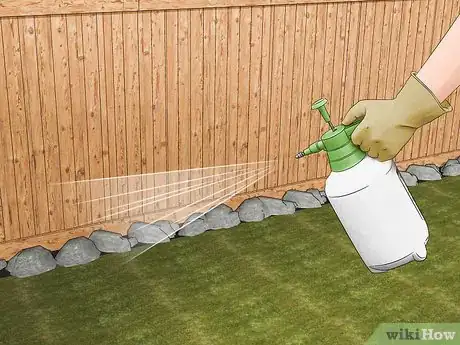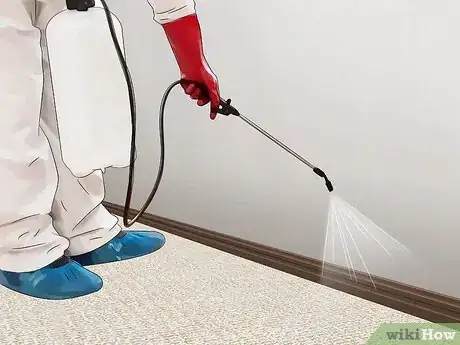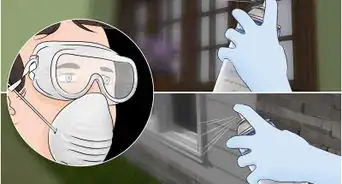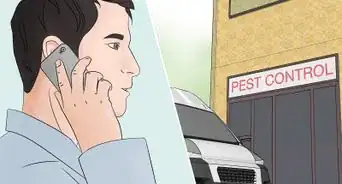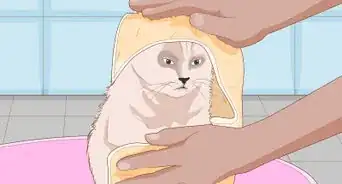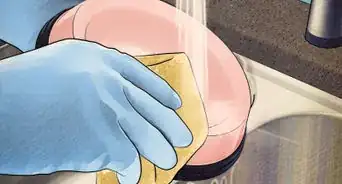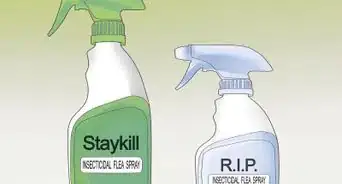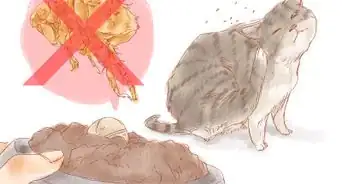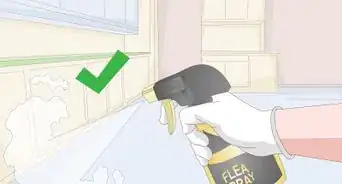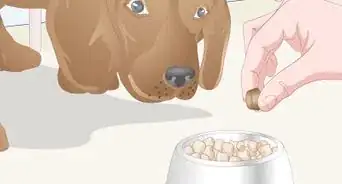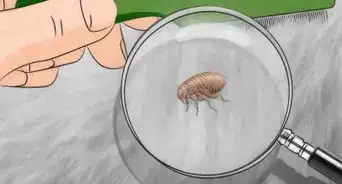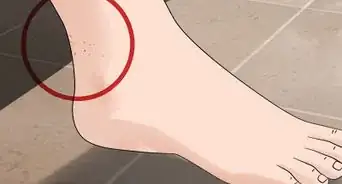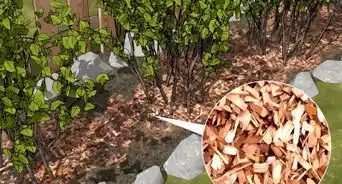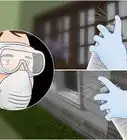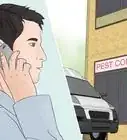This article was written by Luke Lewis and by wikiHow staff writer, Hunter Rising. Luke Lewis is a Pest Management Expert and the Founder and President of Native Pest Management. Luke has led his company for over 7 years and specializes in pet-friendly and eco-friendly pest control, termite control, and lawn care. Native Pest Management was named as one of Inc. Magazine’s 5000 fastest growing companies in America. Luke holds both BS and MS degrees from the University of Florida and is a graduate of UF's Pest Management University.
There are 17 references cited in this article, which can be found at the bottom of the page.
This article has been viewed 102,383 times.
Fleas are some of the smallest pests, but they’re a huge nuisance once they get into your home. Even though fleas don’t live on people, they could still be hiding on your pets, in your carpets, or even in your furniture. Even though there are quick ways to kill fleas, it may take a couple of months to completely control them on your own. We'll cover a ton of effective options to get rid of fleas in your home, on your pets, and in your yard so you have total coverage!
Steps
Expert Q&A
-
QuestionHow effective is fogging for fleas?
 Luke LewisLuke Lewis is a Pest Management Expert and the Founder and President of Native Pest Management. Luke has led his company for over 7 years and specializes in pet-friendly and eco-friendly pest control, termite control, and lawn care. Native Pest Management was named as one of Inc. Magazine’s 5000 fastest growing companies in America. Luke holds both BS and MS degrees from the University of Florida and is a graduate of UF's Pest Management University.
Luke LewisLuke Lewis is a Pest Management Expert and the Founder and President of Native Pest Management. Luke has led his company for over 7 years and specializes in pet-friendly and eco-friendly pest control, termite control, and lawn care. Native Pest Management was named as one of Inc. Magazine’s 5000 fastest growing companies in America. Luke holds both BS and MS degrees from the University of Florida and is a graduate of UF's Pest Management University.
Pest Management Expert Not that effective. Aerosol insecticide sprays are recommended instead of foggers, which will allow you to direct sprays under beds and other furniture and cracks and crevices that foggers may be unable to reach.
Not that effective. Aerosol insecticide sprays are recommended instead of foggers, which will allow you to direct sprays under beds and other furniture and cracks and crevices that foggers may be unable to reach.
Warnings
- Always read the warning labels on any insecticides you use in case they aren’t safe around pets or children.[35]⧼thumbs_response⧽
- If you can’t easily wash pet bedding or toys that have been infested with fleas, throw them away as soon as you can.[36]⧼thumbs_response⧽
- Flea bites usually only cause itching and slight swelling and do not need medical attention. However, if you develop hives, shortness of breath, dizziness, or weakness, it could be a sign of a more serious allergic reaction or infection. Contact your doctor to find out if you need any further treatment.[37]⧼thumbs_response⧽
References
- ↑ Luke Lewis. Pest Management Expert. Expert Interview. 21 June April 2022.
- ↑ Kevin Carrillo. Pest Control Specialist. Expert Interview. 5 November 2019.
- ↑ https://hgic.clemson.edu/factsheet/flea-control/
- ↑ Luke Lewis. Pest Management Expert. Expert Interview. 21 June April 2022.
- ↑ Kevin Carrillo. Pest Control Specialist. Expert Interview. 5 November 2019.
- ↑ Luke Lewis. Pest Management Expert. Expert Interview. 21 June April 2022.
- ↑ http://ipm.ucanr.edu/PMG/PESTNOTES/pn7419.html
- ↑ https://my.clevelandclinic.org/health/diseases/21718-flea-bites
- ↑ Kevin Carrillo. Pest Control Specialist. Expert Interview. 5 November 2019.
- ↑ Luke Lewis. Pest Management Expert. Expert Interview. 21 June April 2022.
- ↑ http://ipm.ucanr.edu/PMG/PESTNOTES/pn7419.html
- ↑ Kevin Carrillo. Pest Control Specialist. Expert Interview. 5 November 2019.
- ↑ https://www.pctonline.com/article/-pest-spotlight--common-flea-control-challenges/
- ↑ https://edis.ifas.ufl.edu/publication/IN1103
- ↑ https://www.bobvila.com/articles/best-flea-trap/
- ↑ https://www.ncbi.nlm.nih.gov/pmc/articles/PMC7600267/
- ↑ https://ohioline.osu.edu/factsheet/HYG-2081-11
- ↑ Kevin Carrillo. Pest Control Specialist. Expert Interview. 5 November 2019.
- ↑ Luke Lewis. Pest Management Expert. Expert Interview. 21 June April 2022.
- ↑ https://sfyl.ifas.ufl.edu/archive/hot_topics/families_and_consumers/getting_rid_of_fleas.shtml
- ↑ https://my.clevelandclinic.org/health/diseases/21718-flea-bites
- ↑ https://www.cdc.gov/fleas/getting_rid.html
- ↑ Luke Lewis. Pest Management Expert. Expert Interview. 21 June April 2022.
- ↑ https://sfyl.ifas.ufl.edu/archive/hot_topics/families_and_consumers/getting_rid_of_fleas.shtml
- ↑ Kevin Carrillo. Pest Control Specialist. Expert Interview. 5 November 2019.
- ↑ Luke Lewis. Pest Management Expert. Expert Interview. 21 June April 2022.
- ↑ Kevin Carrillo. Pest Control Specialist. Expert Interview. 5 November 2019.
- ↑ http://ipm.ucanr.edu/PMG/PESTNOTES/pn7419.html
- ↑ https://www.cdc.gov/fleas/avoid/in_the_yard.html
- ↑ https://entomology.ca.uky.edu/ef602
- ↑ Luke Lewis. Pest Management Expert. Expert Interview. 21 June April 2022.
- ↑ https://entomology.ca.uky.edu/ef602
- ↑ https://www.betterhealth.vic.gov.au/health/conditionsandtreatments/fleas
- ↑ https://extension.missouri.edu/publications/g7380
- ↑ https://extension.missouri.edu/publications/g7380
- ↑ https://extension.missouri.edu/publications/g7380
- ↑ https://my.clevelandclinic.org/health/diseases/21718-flea-bites
